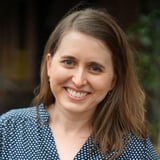Summary
When global travel shut down, Viamo had a dilemma: how would they meet their users? For almost a decade, Viamo has worked with communities around the globe building products for people with limited access to technology. They operate in over 40 countries and their staff comprises workers based in 19 different time zones. Learn how the Viamo team has become better designers, more equitable practitioners, and better positioned as a company by adopting a “Human Centered Design Approach”, skilling up their in-country teams, and working with a network of local design researchers.
Key Insights
-
•
Embedding local designers in user communities enables more authentic, continuous research and better product outcomes.
-
•
Pandemic restrictions accelerated the shift away from flying-in designers to locating them near users.
-
•
Extractive research treats users as data sources rather than partners, which harms trust and design quality.
-
•
Compensation frameworks for research participants improve ethical standards and engagement.
-
•
Design practices and research methods must be adapted flexibly to local cultural contexts.
-
•
Building sustained relationships with users requires regular follow-up beyond initial research interactions.
-
•
Company-wide human-centered design education fosters shared understanding and deeper community engagement.
-
•
Design work should be continuous and collaborative, not isolated and project-limited, to ensure knowledge retention.
-
•
Maintaining and sharing research documentation enhances organizational memory and resilience.
-
•
Reducing travel for research helps lower an organization's carbon footprint while encouraging closer local engagement.
Notable Quotes
"Go home and find a way to do it where you're from. Don't come here to Thailand."
"When someone gives you their phone number or interview with you, you become a steward of their data."
"Users are not just sources of data; they're partners who bring their experiences and insights."
"If you want your users to trust you, you need to share openly and be transparent about your research."
"We started a human-centered design passport training to empower local staff to engage in research."
"Flying out to meet users and then flying home to design somewhere else is not sustainable or effective."
"Briefcase NGOs show up, collect opinions, don't pay people, and then disappear."
"Nothing is ever finished. Everything is a living document, constantly evolving based on local feedback."
"Building follow-up into your work plans is crucial, so you're engaging users at key decision moments."
"Reducing flights isn't about abolishing travel, but about reducing carbon emissions and building resilience."
Or choose a question:
















More Videos

"I often find myself wondering what I really gained from time away from my desk beyond swag and catching up with colleagues."
Bria AlexanderTheme Two Intro
October 3, 2023

"Even when we bring the data together, we’re still not necessarily synthesizing very well."
Brad Peters Anne MamaghaniShort Take #1: UX/Product Lessons from Your Industry Peers
December 6, 2022

"Take advantage of the digital swag bag — it’s our way of replicating in-person perks in a virtual world."
Bria AlexanderOpening Remarks
September 9, 2022

"Google’s photo algorithm mistakenly tagged Black people as gorillas, which was called out by Jackie Elsene."
Nancy DouyonWe'll Figure That Out in the Next Launch: Enterprise Tech's Nobility Complex
June 15, 2018

"Sharing small, incremental updates about research progress provides visibility and makes people appreciate the craft behind the work."
Roberta Dombrowski Sam Duong WoloszynskiMaking Research a Team Sport
March 11, 2022

"Founders are hard to recruit for research, so showing genuine interest by solving their problems helps turn them into advocates."
Prayag Narula Abhinav KrishnaDialing for Research: How to Reach the Unreachable
March 10, 2022

"Your job is not producing assets; it’s usually some other kind of process. If it’s only about assets, find a better job."
Tom Armitage Carla Diana Kanene Ayo HolderDay 2 Panel: Looking ahead: Designing with AI in 2026
June 11, 2025

"Eye tracking helps to generate instant new hypotheses by revealing what a user noticed or missed."
Jeff Ephraim Bander Ariane Rahn Philipp ReiterEye Tracking Gamechanger: Why Smartphone Eye Tracking will Revolutionize Your UX Research
March 11, 2022

"If you don’t collect data on somebody, they become invisible and nobody should be invisible."
Amy Paris Danielle ThierryDelivering Equity: Government Services for All Ages, Languages, Sexual Orientations, and Gender Identities
December 9, 2021
















